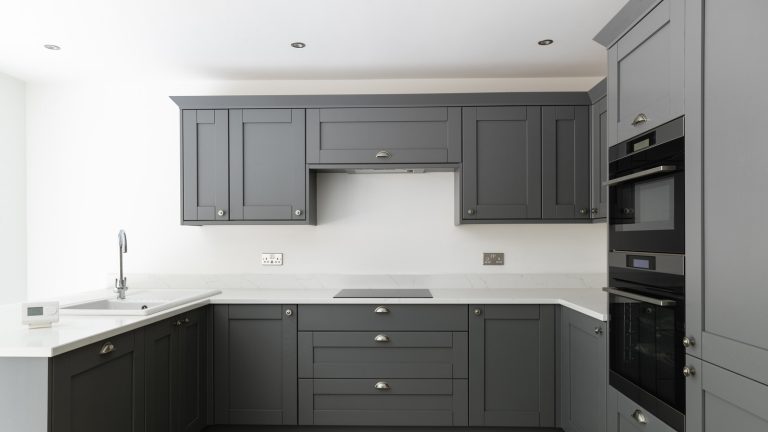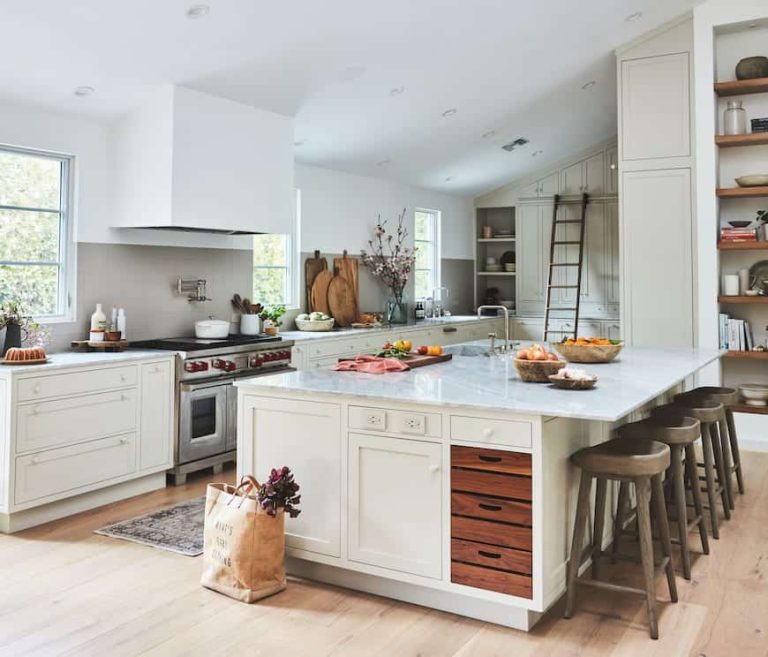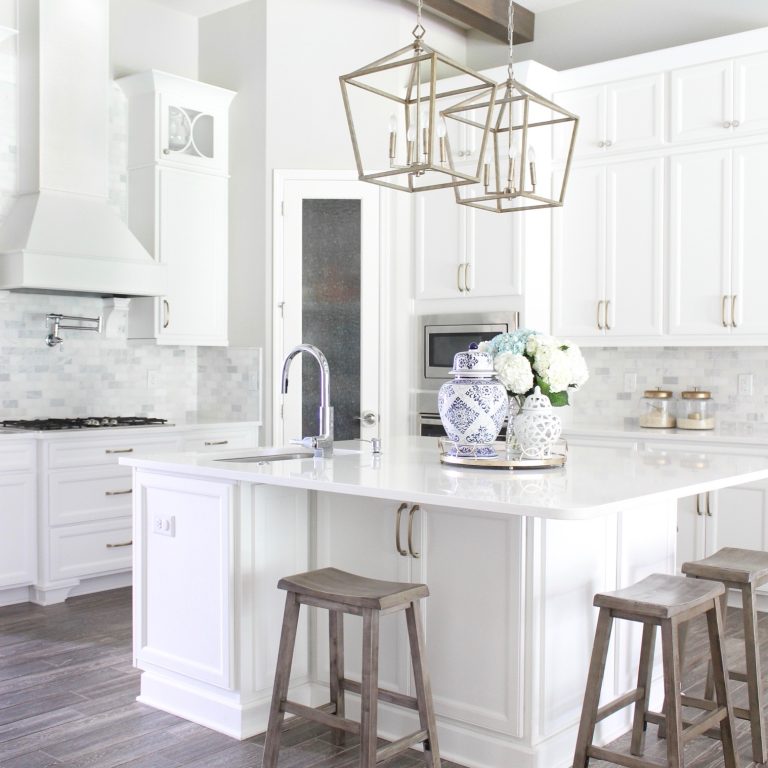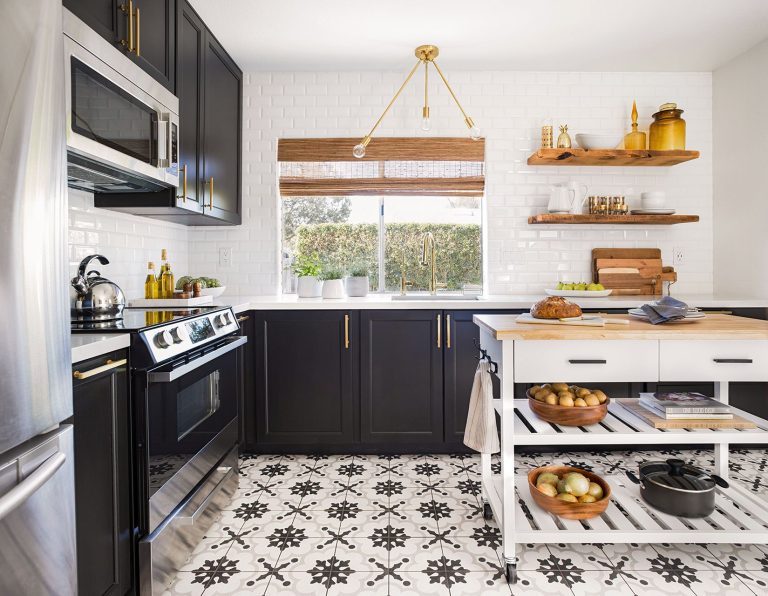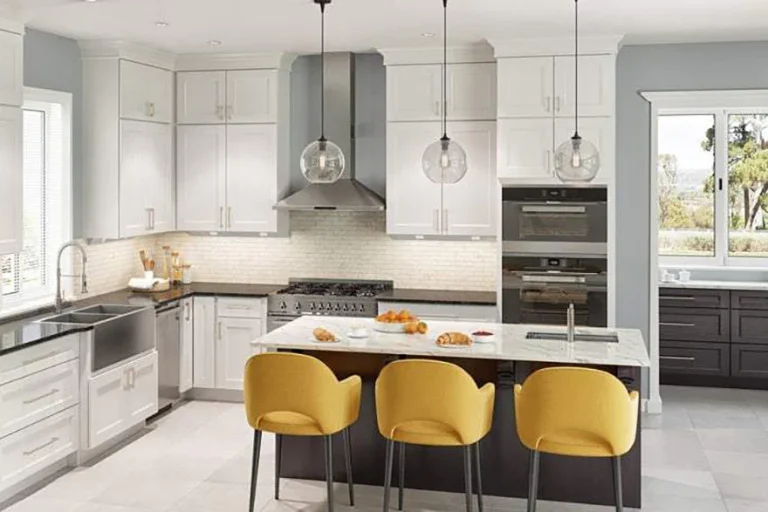How Much Thickness Is Good For Kitchen Cabinets?
When selecting kitchen cabinets for your home, you should consider the thickness of the cabinets in order to ensure that they will be able to withstand the wear and tear that comes with regular kitchen use. Generally, thicker cabinets are more durable, but they can also be more expensive. The ideal thickness for kitchen cabinets should be between 1/2″ and 3/4″ thick. The thicker the material, the better the quality, and the greater the durability. However, if you are looking for a more affordable option, you may be able to find cabinets that are thinner than this, while still providing a good level of quality. Ultimately, it is up to you to decide the thickness of your kitchen cabinets, depending on your budget and the amount of use they will get.
Types of Kitchen Cabinets
Kitchen cabinets are an essential part of any kitchen and come in a variety of materials, shapes, sizes, and styles. Cabinets can be made out of wood, metal, plastic, laminates, and more. Traditional styles include face-frame, full overlay, and inset cabinets, while modern cabinets may be frameless, slab-style, and even wall-mounted. Each type of cabinet offers its own unique benefits and can be customized to fit any kitchen design. Whether you are looking for a more classic look or want a contemporary style, there is surely a type of kitchen cabinet that suits your taste and budget.
Factors to Consider When Choosing Cabinet Thickness
When selecting cabinets for your home, there are many factors to consider. One of the most important is the thickness of the cabinet. Cabinet thickness can influence the look and functionality of your kitchen or bathroom. Thicker cabinets provide a sturdier support system, while thinner cabinets can be more cost-effective. The thickness of the cabinet should be determined by the specific needs of the project. Factors to consider include the weight of items that will be stored in the cabinet, any structural support needs, and the desired aesthetic of the space. Additionally, cabinets made of certain materials may require different thicknesses for optimal support. By considering all of these factors, you can ensure that you choose the best cabinet thickness for your project.
Benefits of Thicker Cabinets
Thicker cabinets can provide a number of benefits for your kitchen. They are often more durable than thinner cabinets and offer improved structural integrity. Thicker cabinets also create a more contemporary look and can add value to your home. Additionally, thicker cabinets offer more storage space and are better able to support heavier items. With thicker cabinets, you can also enjoy improved sound insulation, which makes your kitchen more pleasant. All in all, thicker cabinets can be a great investment for your home and kitchen.
Types of Hardware Compatible with Thick Cabinets
When it comes to selecting the right hardware for your thick cabinet, it’s important to make sure that the hardware you choose is compatible with the thickness of the cabinet. Hardware for thick cabinets is designed to be strong and durable, able to support the weight of the cabinet. Some of the most common types of hardware compatible with thick cabinets include heavy-duty hinges, locks, handles, and pulls. Heavy-duty hinges are designed to support the weight of the cabinet and prevent sagging, while locks and handles provide additional security. Finally, pulls and knobs are the perfect finishing touch, allowing for easy access to the contents of the cabinet. With the right hardware, you can ensure your thick cabinets are safe and secure.
Tips for Installing Thick Cabinets
Installing thick cabinets can be a daunting task, but with the right tips and tricks, you can make it a breeze. Here are some essential tips for installing thick cabinets: First, make sure you measure twice and cut once. When cutting the cabinet openings, use a circular saw with a sharp blade. Don’t forget to use a backer board behind the cabinet frame for added strength and stability. Next, use shims to level the cabinets, and use a drill to secure the cabinets to the wall. Finally, don’t forget to use a level while attaching the cabinet doors, so they hang evenly. With these tips, you’re sure to have success when installing thick cabinets.
Maintenance and Care for Thick Cabinets
Thick cabinets give a classic, luxurious feel to any home. To keep them looking as beautiful as the day you bought them, proper maintenance and care are required. Regular dusting with a soft cloth will help keep dirt and dust at bay. For more stubborn stains, use a mild detergent and damp cloth to gently wipe away any dirt. Avoid using abrasive cleaning products and sponges, as these can scratch and damage the surface of your cabinets. To protect the finish, use a furniture wax or polish on a regular basis. If you have glass doors, use a glass cleaner to keep them looking streak-free. Finally, make sure to check your cabinets for signs of wear and tear periodically, and address any issues as soon as possible. With the right care, your thick cabinets will remain a timeless addition to your home for years to come.
Common Mistakes to Avoid When Choosing Thick Cabinets
When selecting thick cabinets for your home, it’s important to avoid common mistakes that can lead to costly repairs or replacements down the line. Here are a few tips to help you make the best choice:
1. First, measure carefully. Thick cabinets are more difficult to install than thin cabinets and require precise measurements to ensure a perfect fit.
2. Consider the weight of the cabinet when making your selection. Heavier cabinets are often more durable but can be difficult to install.
3. Choose cabinets that are made from quality materials. Low-quality materials can cause premature wear and tear and may require more maintenance over time.
4. Make sure the cabinets are securely mounted in place. Improperly mounted cabinets can lead to costly repairs and costly replacements.
5. Finally, be sure to check for any signs of damage before installation. Damaged cabinets can lead to costly repairs and replacements down the line.
By following these tips, you can ensure that you choose the right thick cabinets for your home and avoid any costly mistakes in the future.
Alternatives to Thick Kitchen Cabinets
Are you looking to spruce up the look of your kitchen without a major overhaul? Thick kitchen cabinets might not be the best fit for your desired aesthetic. Fortunately, there are plenty of alternatives to traditional thick cabinets that could give your kitchen a unique flare. From open shelving to floating cabinets, there is no shortage of options! Open shelving allows for a more modern feel while floating cabinets can give your kitchen a sleeker, airier feel. Consider using colors, textures, and materials that complement the style of your kitchen and add a wow factor. With a little creativity, you can achieve the look you want without sacrificing the functionality of your kitchen.
FAQs About the How Much Thickness Is Good For Kitchen Cabinets?
Q1: What is the ideal thickness for kitchen cabinets?
A1: The ideal thickness for kitchen cabinets is between 18mm and 22mm. This thickness provides enough strength and durability to support the weight of items stored in the cabinet without compromising on space or aesthetics.
Q2: Are thicker kitchen cabinets more expensive?
A2: Generally, the thicker the kitchen cabinets, the more expensive they will be. However, the added cost may be worth it if you are looking for a longer-lasting and more durable kitchen cabinet that will last for many years.
Q3: Are thicker kitchen cabinets more difficult to install?
A3: No, thicker kitchen cabinets are not more difficult to install. However, they do require more precise measuring and cutting to ensure a secure fit. It is always best to consult with a professional for installation if you are unsure of how to install thicker kitchen cabinets.
Conclusion
When it comes to kitchen cabinets, it is important to consider the thickness of the material used. Generally speaking, thicker material is better for cabinets because it is more durable and can withstand more wear and tear. Additionally, thicker material is more resistant to humidity and temperature fluctuations, which can help extend the life of your cabinets. However, it is important to weigh the cost of thicker material against the benefits it offers in order to find the best option for your kitchen.


